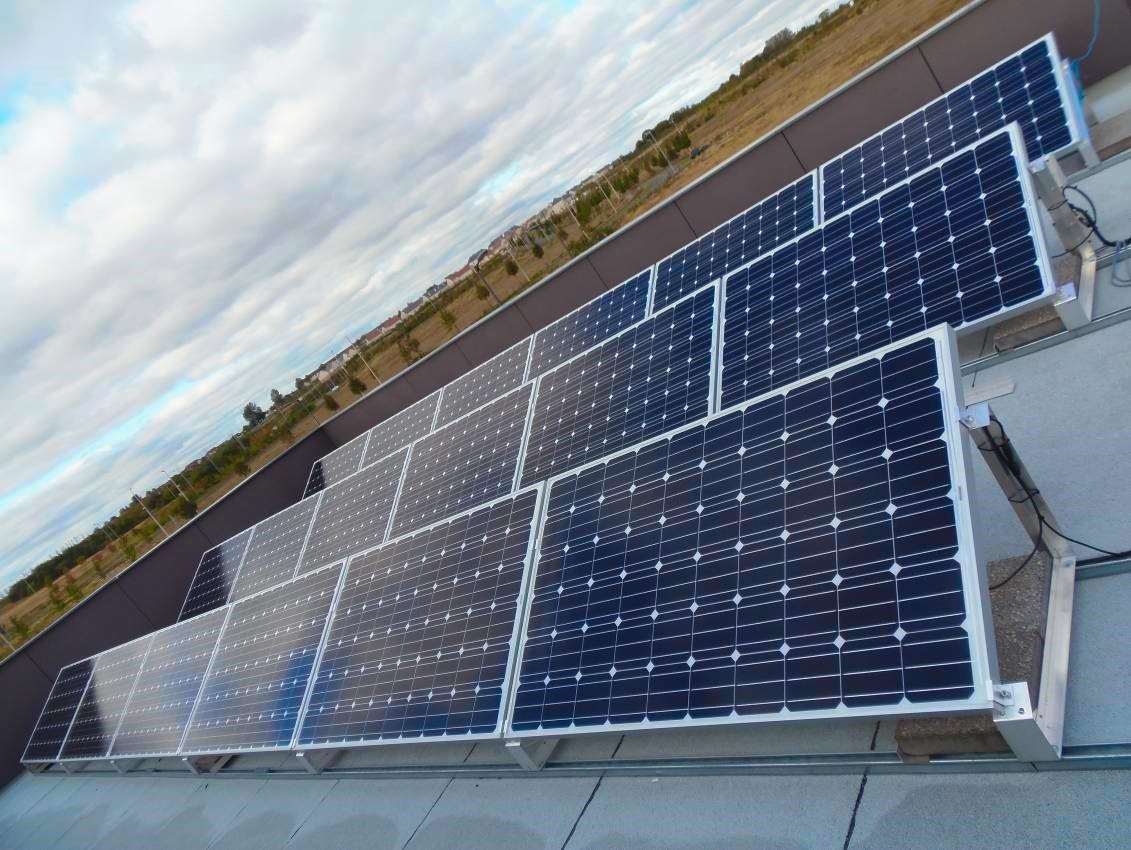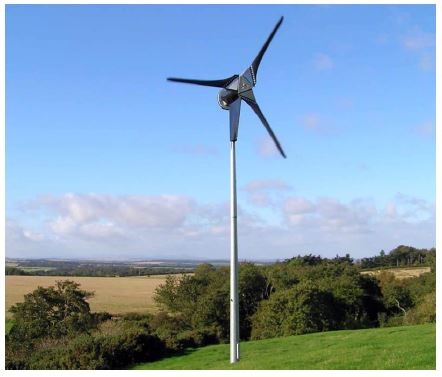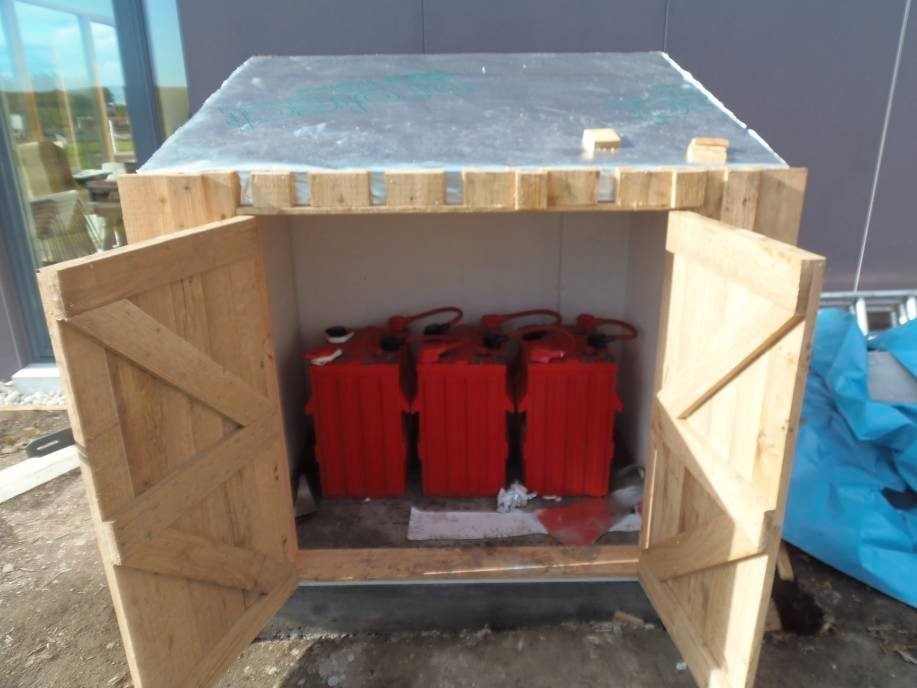Electricity Supply
Two different types of renewable electricity supply options were investigated:
- Solar Photovoltaic (PV) panels: Addition of more PV panels to the existing capacity of 4.5 kW, going up to 9 kW.
- Wind Turbine: Installation of a 2.5 kW or 6 kW wind turbine on-site.
The Visitor Centre is also equipped with batteries as an electricity storage option.
Photovoltaic (PV) Panels
A 4.5 kW photovoltaic (PV) array (30° tilt angle, south-facing) is located on the roof of the Visitor Centre, as shown in Figure 1. This consists of 18 Suntech 250 W monocrystalline solar PV panels.
 Figure 1: Existing PV array on the roof of the Visitor Centre
Figure 1: Existing PV array on the roof of the Visitor Centre
| PV Panels | Solar Module STP250S – 20/wd |
|---|---|
| Manufacturer | Suntech |
| Cell Type | Monocrystalline |
| Rated Power PMAX | 250 W |
| Module Efficiency | 15.4 % |
| Rated Current IMPP | 8.15 A |
| Rated Voltage VMPP | 30.7 V |
| Short Circuit Current ISC | 8.63 A |
| Open Circuit Voltage VOC | 37.4 V |
The system features a Victron Energy Phoenix Inverter to convert the DC current produced by the PV panels to AC current.
The annual output of the current PV array of 18 panels has been estimated at nearly 5.34 MWh though MERIT modelling tool, considering the climate of Glasgow area. Thereby, the amount generated annually by each PV module equals to almost 297 kWh.
The expansion of the current PV array was examined, by adding up to 36 PV panels (9 kW of total capacity), so as to better meet the demands of Visitor Centre and export the surplus electricity to the grid. There is sufficient field space around the Visitor Centre in order for the extra PV panels to be accommodated.
Wind Turbine
The option of installing a Wind Turbine on the field space around the Visitor Centre was also investigated.
Two different Proven Energy wind turbine models (2.5kW / 6kW) have been found suitable to be installed, in order to meet the building demands and any energy surplus to be exported back to the grid. The technical characteristics of the selected models are presented in Table 2.
| Wind Turbine | Proven 2.5 kW | Proven 6 kW |
|---|---|---|
| Manufacturer | Proven Energy | |
| Rated Power Output | 2500 W | 6000 W |
| Voltage | 12V / 24V / 48V / 120V / 240V / 300V | 12V/ 24V / 48V / 120V / 240V / 300V |
| No. of blades | 3 | |
| Cut in | 2.5 m/s | |
| Cut out | None | |
| Survival | 70 m/s | |
| Rated | 12 m/s | |
| Rotor Type | Downwind, self-regulating | |
| Generator type | Brushless, Direct drive, Permanent magnet | |
| Rotor diameter | 3.5 m | 5.5 m |
| Rated RPM | 300 | 200 |
| Hub height | 11 m | 15 m |
| Tower foundations | 2.5 x 2.5 x 2.5 m | 3 x 3 x 1.2 m |
| Winch foundations | 1 x 1 x 1 m | 1.5 x 1.5 x 1 m |
| Noise Level at 5 m/s | 40 dBA | 45 dBA |
| Noise Level at 20 m/s | 60 dBA | 65 dBA |
These two wind turbine models have been simulated using MERIT tool, in order to estimate their annual output. Proven 2.5 kW has an annual output of about 5.08 MWh, while the output of Proven 6 kW reaches 14.82 MWh annually. These are according to the surrounding surface type of Visitor Centre, which has been modelled as an Open Agricultural Area with Little Shelter (Roughness Class 1).
 Figure 2: Proven Energy 6 kW wind turbine in operation
Figure 2: Proven Energy 6 kW wind turbine in operation
Batteries
The Visitor Centre also features a comprehensive battery facility for storing energy which includes 6 Deep Cycle Series 5000 batteries, connected in series. They are located in an external shed, as shown in Figure 3, and the basic characteristics of the model are displayed in Table 3.
 Figure 3: 6 x Deep Cycle Series 5000 batteries enclosure
Figure 3: 6 x Deep Cycle Series 5000 batteries enclosure
| Batteries | Deep Cycle Series 5000 4 KS 2IP |
|---|---|
| Manufacturer | Surette |
| Capacity | 1104 Ah (@20Hr rate) |
| Nominal Voltage | 4 V |